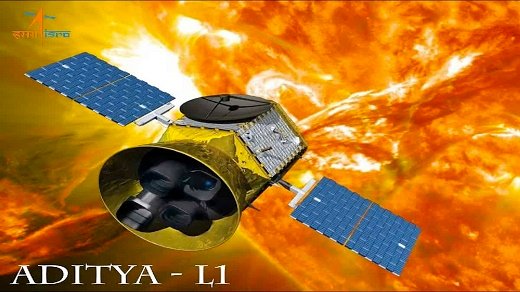India’s space agency ISRO has achieved a significant milestone with the successful launch of Aditya L1, the country’s first dedicated solar mission. This historic achievement marks a new era in India’s space exploration efforts, focusing on studying the Sun’s behavior and its impact on Earth and space weather. In this detailed article, we delve into the significance of Aditya L1, its objectives, duration, and other crucial details that make this mission a remarkable feat.
Understanding Aditya L1’s Significance
Aditya L1 is named after the Sun, referred to as “Aditya” in Sanskrit. The mission aims to study the outermost layer of the Sun, known as the corona. Understanding the corona is essential as it plays a vital role in space weather phenomena, solar flares, and geomagnetic storms that can impact Earth’s communication systems, satellites, and power grids.
Key Objectives of Aditya L1
1. Studying Solar Corona: The primary objective of Aditya L1 is to study the dynamics of the solar corona and its underlying processes. This research can provide insights into the Sun’s behavior, the mechanisms behind solar flares, and the solar wind’s impact on Earth.
2. Space Weather Predictions: By studying the corona, scientists aim to enhance their ability to predict space weather events that can impact Earth’s technology and infrastructure. This includes geomagnetic storms that can disrupt communication systems and power grids.
3. Origin of Solar Wind: Aditya L1 will also investigate the origin of the solar wind, a stream of charged particles emitted by the Sun that affects space weather and influences planetary atmospheres.
Mission Details
1. Launch Success: Aditya L1 was successfully launched into space, marking a historic achievement for India’s space program.
2. Duration: The mission is expected to have a lifespan of approximately five years, during which it will gather valuable data about the Sun’s behavior.
3. Instrumentation: The mission is equipped with multiple instruments, including the Visible Emission Line Coronagraph (VELC) and the Solar Ultraviolet Imaging Telescope (SUIT), to capture images and data related to the solar corona.
4. Orbit: Aditya L1 will be positioned in a halo orbit around the Lagrange point 1 (L1), a point between the Earth and the Sun where the gravitational forces of both bodies are in equilibrium.
5. International Collaboration: The mission is a collaborative effort involving scientists and researchers from various countries, contributing to the global understanding of space weather phenomena.
Advancing India’s Space Exploration
Aditya L1’s successful launch showcases India’s growing capabilities in space exploration and research. The mission aligns with ISRO’s commitment to advancing scientific knowledge and contributing to the global understanding of space phenomena.
In Conclusion:
The successful launch of Aditya L1, India’s first solar mission, marks a momentous achievement for ISRO and the nation’s space exploration endeavors. By focusing on studying the solar corona, the mission aims to enhance our understanding of space weather, solar flares, and their impact on Earth. As Aditya L1 embarks on its mission to unveil the mysteries of the Sun, it paves the way for valuable insights that can shape our understanding of the universe.


